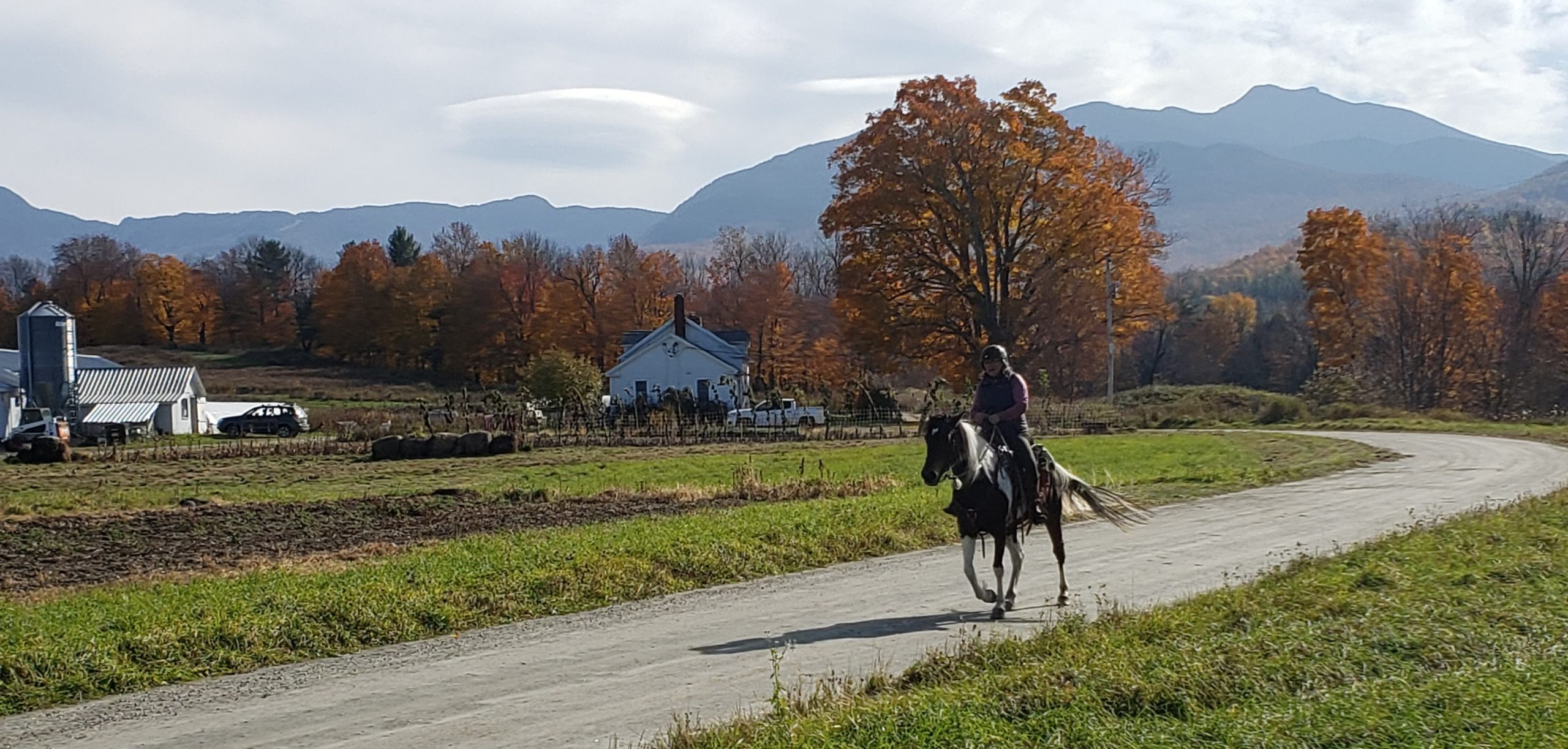My last blog post talked about introducing trail riding to a non-trail riding horse. This week I’m going to talk a little about making your trail horse even better!
One thing that is really beneficial for any trail horse is to be exposed to new things in a safe way.
To that end, earlier this summer, Monica and I had the pleasure of attending an equine sensory day clinic at a nearby farm. This clinic incorporated a bunch of trail obstacles as well as a bunch of intense stimuli like smoke, fire, and loud and sudden noises. The idea was to help your horse understand to trust their rider and basically not just freak out when they see something weird. This clinic was based on a police horse training clinic that the barn owner had attended.
Both of our horses (Prophet and Tupelo) are experienced trail horses and were incredibly well behaved during the clinic.

Smoke bombs? Oh, okay. Whatever.
One of the obstacles we had to tackle on the trail course was a line of pool noodles sticking up that the horses were supposed to walk over. The noodles would brush against their bellies as they walked over it. Sure, I don’t expect to encounter pool noodles when I am out trail riding. However, I often have to ask my horse to push through tree limbs and shrubs. Just this past weekend I was riding an inexperienced horse out on a trail and we had to do a little bushwhacking to avoid a downed tree in the middle of the trail. When the unfamiliar shrubs brushed against his belly, he was confused and obviously uncomfortable. This resulted in him jumping forward and almost into the horse in front of me. After a few more less dramatic startles from him during our rides, he finally became comfortable with the feeling of something touching his belly unexpectedly. Prophet is so used to this feeling that he doesn’t even seem to notice when he brushed through branches and shrubs.

Kelly and Belle showing how the pool noodles should be handled.
We also had to walk over a teeter totter and over a tarp with a small mattress under it. Again, I don’t actually expect to encounter these things on a trail unless I’m riding in some really sketchy locations, but these obstacles also have a specific purpose. These things help your horse to understand how to react calmly on unstable ground and how to balance on footing that may not be perfect. Think about riding in deep mud or on rocks that may shift under your horse’s feet. Having both the horse and rider be prepared for these situations can be a life safer on the trail.

Laura and Copper demonstrate the teeter totter.
We also had a mock police car driving around during the clinic. This is something that you definitely could encounter on the trail (only, you know.. probably an actual car and not a lawnmower). I remember years ago I was riding a young OTTB and a police car drove by with their sirens blaring. That was how I learned that I could occasionally do a full somersault and land on my feet when falling off a horse. Prophet ended up being so calm about the racket of the police car that we chased it around a bit.
We also had to contend with popping balloons and even an air pistol! Living in Vermont, we often hear gunfire as we are riding, particularly during hunting season. Prophet was pretty calm about this too (because he’s the best ever, obviously!). We ended up cantering around while I fired the pistol. A few of the horses had trouble with this, but when they finally calmed down and accepted the noise they were rewarded by the release of pressure (in this case, having the rider stop firing the gun).
We had to tackle many more obstacles during the clinic. Here are a few:

We walked over.. er… jumped over… fire!

Navigated the tarp and pool noodle tunnel… of doom!

We were unimpressed by clouds of multicolored smoke.

And smashed our way through a kiddie pool.
Some of the important things that were reinforced for me through this clinic were:
- It’s all about the release! If you don’t release, your horse doesn’t know if they have found the right answer.
- Stay calm. Breathe. Getting tense and nervous will not help your horse accept new things.
- Pick a line to stay on when approaching a potentially scary thing. Keep your eyes on where you’re going and always be aiming for your destination.
- Horses are amazing and can get used to a lot of really weird stuff! Trust that they can learn and accept things you wouldn’t think they possibly could.
A huge thank you to Sweet Moon Stables for hosting this awesome clinic!
Happy trails!
Kerrie


